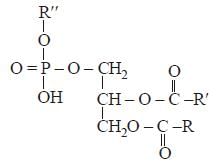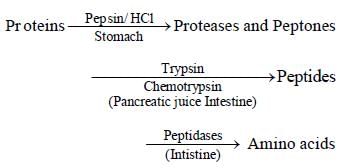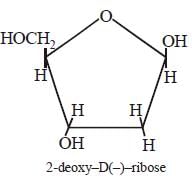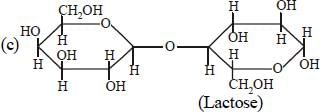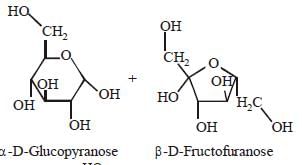31 Year NEET Previous Year Questions: Biomolecules - NEET MCQ
30 Questions MCQ Test Chemistry Class 12 - 31 Year NEET Previous Year Questions: Biomolecules
Cellulose is a polymer of [2002]
| 1 Crore+ students have signed up on EduRev. Have you? Download the App |
Which is not a true statement? [2002]
Phospholipids are esters of glycerol with [2003]
Chargaff's rule states that in an organism [2003]
Which one of the following structures represents the peptide chain? [2004]
A sequence of how many nucleotides inmessenger RNA makes a codon for an amino acid? [2004]
The hormone that helps in the conversion ofglucose to glycogen is [2004]
The enzyme which hydrolyses triglycerides tofatty acids and glycerol is called [2004]
The correct statement in respect of protein haemoglobin is that it [2004]
The helical structure of protein is stabilized by [2004]
Which functional group participates indisulphide bond formation in proteins? [2005]
The cell membranes are mainly composed of [2005]
Which one of the following is a peptide hormone ? [2006]
The human body does not produce [2006]
During the process of digestion, the proteins present in food materials are hydrolysed to amino acids. The two enzymes involved in the process
 are respectively [2006]
are respectively [2006]
RNA and DNA are chiral molecules, their chiralityis due to [2007]
Which one of the following is an amine hormone ? [2008]
In DNA, the complimentary bases are: [2008]
The segment of DNA which acts as theinstrumental manual for the synthesis of the protein is: [2009]
Which of the following hormones containsiodine? [2009]
Which one of the following does not exhibit thephenomenon of mutarotation ? [2010]
Fructose reduces Tollen’s reagent due to:[2010]
Which one of the following statements is nottrue regarding (+) Lactose ? [2011]
Which of the statements about "Denaturation" given below are correct ? [2011 M]
(a) Denaturation of proteins causes loss of secondary and tertiary structures of the protein.
(b) Denturation leads to the conversion of double strand of DNA into single strand
(c) Denaturation affects primary strucrture which gets distorted
Which one of the following, statements isincorrect about enzyme catalysis? [2012]
Deficiency of vitamin B1 causes the disease [2012]
Which one of the following sets of monosaccharidesforms sucrose? [2012]
In DNA the linkages between differentnitrogenous bases are: [NEET Kar. 2013]
|
108 videos|286 docs|123 tests
|


